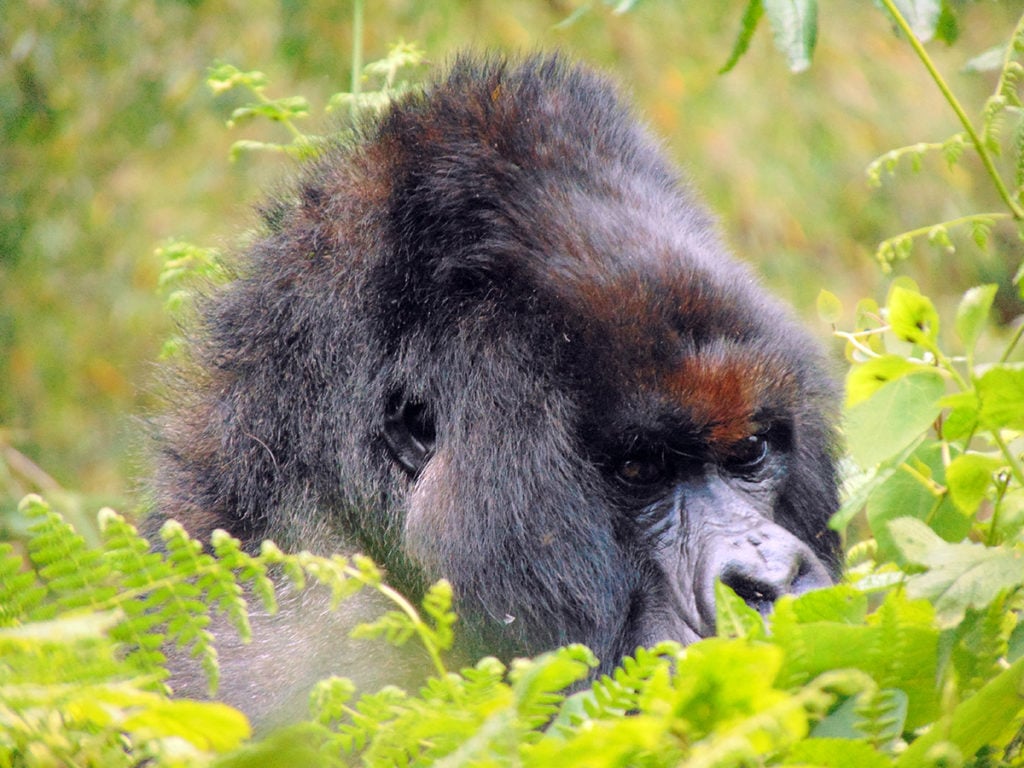The Dian Fossey Gorilla Fund protects about half of the mountain gorilla population in Rwanda’s Virunga mountains, with our courageous teams of trackers and antipoachers. But the gorillas know no borders, and sometimes a group crosses over the border into the Congolese side of the mountains, where our Rwandan trackers cannot go. That means our direct protection as well as our daily data collection for that group will stop, as we wait for the group to come back.
This was the case with Kuryama’s group, which has spent two recent periods in Congo. This included eight months between 2014 and 2015, and again from October 2015 until September of this year. Then, finally, on Sept. 30, the group was spotted on the top of Mr. Bisoke! But its composition had changed, with four original gorillas missing, having probably transferred to other groups in Congo. And those who were left included seven males and only one female!
Before they went to Congo, the group had already faced a number of challenges. Former leader Kuryama was wounded in a fight and then died in 2012, and then his successor, Kirahure, died after being wounded in 2015. The group’s leadership was then left, by default, to 22-year-old silverback Vuba, who led them over the border into Congo in October of last year.

What will happen next?
Now that the group has returned, we have resumed our daily monitoring. With its unbalanced ratio of males to females, this group should provide a lot of insight into gorilla behavior in unusual situations. Vuba has a calm temperament, like that of his father Titus, who also once led a group composed of all males and one female.

Vuba seems to be respected by the other males in the group but they aren’t intimidated by him either, says Fossey Fund research manager Winnie Eckardt, Ph.D. Two of them are already silverbacks, two are younger blackbacks, and one is a juvenile. The female – Mahirwe – has an infant estimated to be about 7 months old, so she will not be available for reproduction again for about another three years. We don’t know who fathered this infant, but our ongoing genetic studies of paternity among the gorillas will eventually give us that answer!
For now, says gorilla program manager Veronica Vecellio, “We hope that the group will stay on the Rwandan side of the Virungas, so we don’t miss any other important phases of each individual’s development!”






